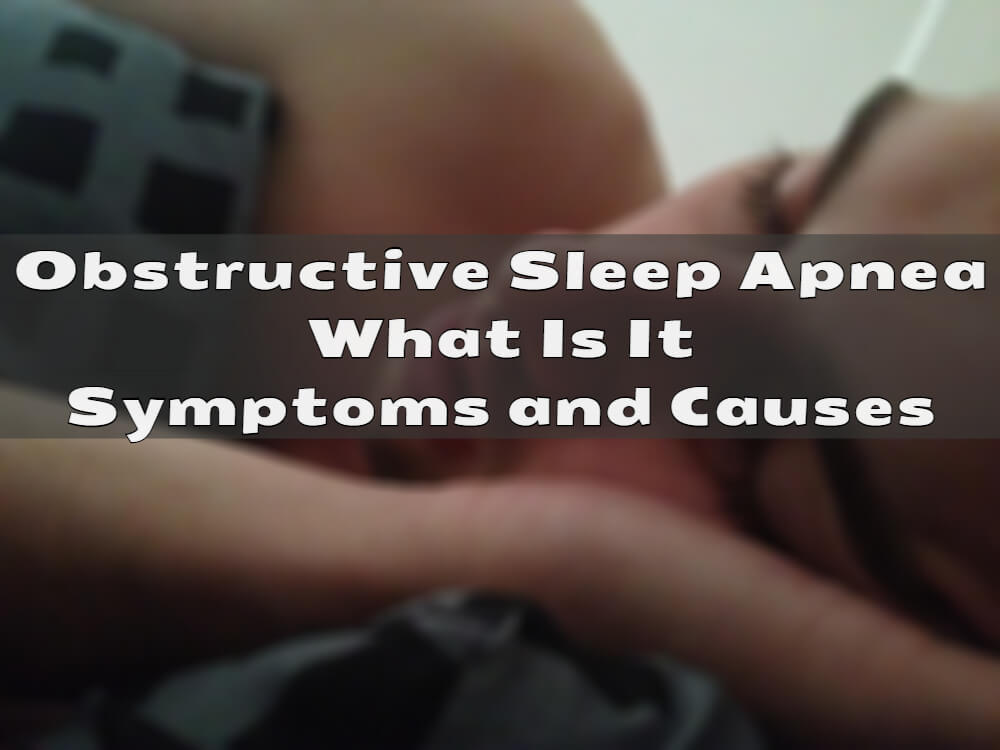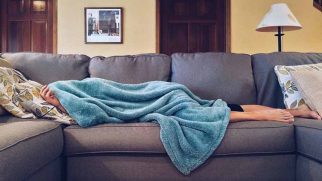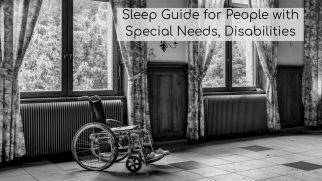Obstructive Sleep Apnea — What Is It, Symptoms and Causes
by | Last Updated
What is obstructive sleep apnea (OSA)?
This is a sleep disorder during which a person may experience breathing cessation due to the upper airway obstruction.
This is a potentially life-threatening condition, so if you suspect it in your loved ones or yourself, continue reading this article to learn how to treat sleep apnea and prevent its unpleasant consequences.
Facts and Data about Sleep Apnea
Here are some facts about OSA you need to know before diving in the nuances:
- Men are two times more likely to develop obstructive sleep apnea than women.
- Smokers are also more likely to suffer from apnea than non-smokers.
- OSA is one of the risk factors of sudden cardiac death. Some studies claim that a decrease in blood oxygen saturation to 78% and below, which is typical for severe forms of apnea, can cause death from cardiac arrest by 80%.
- More than 12 million Americans suffer from various forms of obstructive sleep apnea. And very often this condition lies undiagnosed. Thus, you may not even be aware that you have an increased risk of sudden cardiac death.
Now, the good news:
People with this condition can live a normal life if they receive proper treatment.
Central vs Obstructive Sleep Apnea: The Main Difference
Central Sleep Apnea (ICD 10 code is G47.31)
This condition occurs when brain respiratory center, which is located in the brain stem, fails to send proper signals to the muscles that control your breathing. This may happen due to the following reasons:
- Heart attack or stroke. These conditions can trigger Cheyne-Stokes syndrome, an abnormal breathing pattern characterized by deep and fast breathing followed by a gradual decrease with apnea at the end.
- Drug-induced apnea. Taking opioids or other drugs that depress the respiratory center can trigger central apnea.
- High-altitude breathing. The percentage of oxygen in the mountain air decrease when climbing which results in hypoxia. As a result, the person begins to breathe rapidly and doesn’t allow the lungs to fully open.
Obstructive Sleep Apnea (ICD 10 code is G47.33)
The main obstructive sleep apnea cause is the upper airway blockage. Most often, it’s blocked by a relaxed tongue, tissues of the palate and uvula, which fail to keep the airway open.
Depending on how many apnea events a person experiences during the night of sleep, he or she may encounter:
- light or mild obstructive sleep apnea — 5-15 events per night;
- moderate sleep apnea — 15-30 events per night;
- severe obstructive sleep apnea — more than 30 events per night.
Sometimes episodes of central sleep apnea can occur during the first months of CPAP therapy for OSA. This condition is called complex apnea and goes away by itself.
Obstructive Sleep Apnea Symptoms, Risk Factors, and Complications

Obstructive sleep apnea (OSA) has many symptoms, the most common of which are listed below:
- loud snoring;
- sudden waking in the middle of the night with a gasping sound;
- observed breathing stops during sleep;
- sore throat and dry mouth in the morning;
- excessive drowsiness during the day;
- headache.
Since sleep apnea prevents you from getting quality sleep, you can add to these the effects of sleep deprivation, such as depression, irritability, and inability to concentrate.
Loud and constant snoring is something that someone close to you may notice very quickly. And if they told you about that, then it’s probably time to see the therapist.
Factors That Can Trigger OSA
In addition to smokers, you can also be at increased risk of developing obstructive sleep apnea if you have:
- Excessive weight. White visceral fat can accumulate in the tissues that surround the upper airway thus narrowing it.
- Inherited narrow airways. Some people have enlarged tonsils or adenoids since birth, which may narrow the airways even more.
- Family history of sleep apnea. If your relatives suffered from obstructive sleep apnea, you obviously are at higher risk.
- Retrognathia. This is a condition in which your lower jaw is shorter than the upper, which increases the risk for tongue collapse.
Alcohol can also have an adverse effect on palate muscles causing them to relax uncontrollably. It is recommended that you reduce or completely stop drinking alcoholic beverages during the apnea treatment.
Most Common Obstructive Sleep Apnea Complications
Long-term sleep disruption during apnea can significantly affect your health. Here are some of the main complications that can be experienced:
- Excessive drowsiness and constant fatigue. These are the symptoms accompanying different sleep disorders (i.e. narcolepsy), and they are very dangerous. A person may get a sleep attack while driving or working with machinery and get severe injuries or even die.
- Cardiovascular problems. Pauses in breathing create hypoxia and increase blood pressure, which is extremely negative for vascular health. Moreover, prolonged sleep apnea can lead to a heart attack or stroke.
- Hormonal problems. Prolonged sleep-deprivation is one of the causes of obesity, diabetes, and other hormonal disorders.
- Surgery complications. Sleep apnea can be a negative obstacle for anesthesia implementation. Moreover, your condition may worsen after awakening because drugs used for anesthesia typically inhibit the respiratory center.
Finally, loud and constant snoring negatively affects your partner’s sleep, too. In some cases, this might even end a relationship.
The Main Parts of Obstructive Sleep Apnea Treatment You Should Know
It is impossible to completely cure sleep apnea, but it is possible to ensure rejuvenating sleep by preventing the airway blockage.
This can be achieved in the following ways:
- Positive air pressure therapy. This can be implemented by using BiPAP and CPAP machines.
- Positioning therapy. The worst sleeping position for people with apnea is lying flat on their back. To reduce the symptoms, special wedge-shaped pillows or adjustable base beds are often used, as they create an incline of the upper part of the body, which prevents the airway from closing.
- Surgery. Uvulopalatopharyngoplasty removes excess palate tissues and enlarged tonsils, expanding the airway and reducing the manifestations of apnea.
- Tracheostomy. Another way to help a person with apnea, tracheostomy is when a hole is created in the trachea to alleviate breathing. However, it’s the last line treatment, so it is used when other treatments have not given proper relief.
- Lifestyle changes. Weight loss, quitting smoking and alcohol, as well as moderate physical activity usually provide excellent comprehensive support for targeted apnea therapy.
Also Read:





No Comments